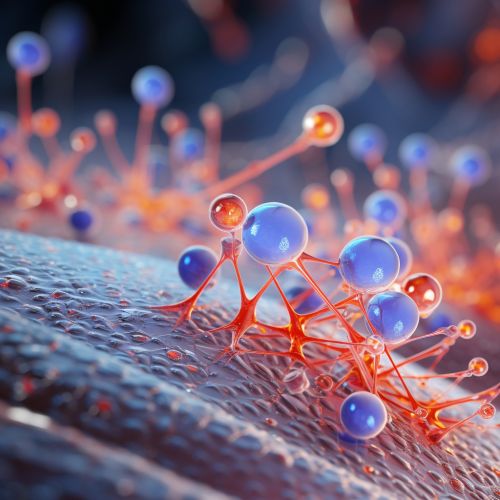Pharmacodynamics
Introduction
Pharmacodynamics, derived from the Greek words "pharmakon" meaning drug and "dynamis" meaning power, is the study of the biochemical and physiological effects of drugs on the body, or on microorganisms or parasites within or on the body, and the mechanisms of drug action and the relationship between drug concentration and effect. It is one of the two main areas of pharmacology, with the other being pharmacokinetics.
Mechanism of Action
Pharmacodynamics revolves around the concept of a drug's mechanism of action (MOA). The MOA refers to the specific biochemical interaction through which a drug substance produces its pharmacological effect. This usually involves the drug binding to a specific enzyme or receptor in the body.


Drug-Receptor Interactions
Drugs interact with receptors by binding to them. The drug-receptor interaction is a key aspect in understanding pharmacodynamics. The binding occurs at a specific site on the receptor called the active site. The drug can either activate the receptor, producing a response, or block the receptor, preventing a response. This leads to the concepts of agonists and antagonists.
Agonists
An agonist is a drug that binds to a receptor and activates it, producing a biological response. Agonists have both affinity (the ability to bind to a receptor) and efficacy (the ability to activate the receptor once bound).
Antagonists
An antagonist is a drug that binds to a receptor but does not activate it. Instead, it blocks the receptor and prevents it from being activated by agonists. Antagonists have affinity but no efficacy.
Dose-Response Relationship
The dose-response relationship is a fundamental concept in pharmacodynamics. It describes the change in effect on the body caused by differing levels of exposure (or doses) to a drug. This relationship is often depicted graphically using a dose-response curve.
Therapeutic Index
The therapeutic index is a comparison of the amount of a therapeutic agent that causes the therapeutic effect to the amount that causes toxicity. It is a key factor in drug development and pharmacodynamics as it determines the safety margin of a drug.
Pharmacodynamic Models
Pharmacodynamic models are mathematical models that illustrate the effects of a drug on a biological system. These models are used to predict the effects of different dosing regimens and to understand the underlying mechanisms of drug interactions.
Drug Resistance
Drug resistance occurs when a drug that used to be effective against a disease no longer works as well. This can occur in many types of diseases, including cancer, infectious diseases, and more. Understanding the pharmacodynamics of drug resistance can help in the development of strategies to overcome it.
Conclusion
Pharmacodynamics is a crucial aspect of pharmacology that helps us understand how drugs work in the body. It involves many complex processes, including drug-receptor interactions, dose-response relationships, and more. Understanding these processes is key to the development of new drugs and therapies.
